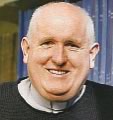The Liturgical Calendar and the Easter Triduum
The origin and heart of the Liturgical Calendar is the celebration of the death and resurrection of Jesus. The Catholic Liturgical Calendar helped shape the Calendar of the civil year that is used throughout the world. The Calendar is so much part of the fabric of our Society that we tend to forget that it was not always the way it is now; that different parts of each have their origin and purposes.
The great solemnity being celebrated the day after Jesus died, according to John’s Gospel, was the Passover feast which was on 14 Nisan, the first month of Spring, in the Jewish calendar. Passover is the celebration of the Exodus events when the ancestors of the Jewish people “passed over” the Red Sea in their escape from slavery in Egypt. In the year of the death of Jesus it fell on a Saturday, the last day of the Jewish week. According to reconstructions of the Jewish calendar that makes the year likely to be either 30 or 33 AD. Jesus died on the Friday, his body lay in the tomb on the Sabbath, and he rose from the dead on the Sunday morning. Mark starts his resurrection account “very early on the first day of the week [the women] went to the tomb when the sun had risen.” (Mark 16:2)
By the second century Christians were also celebrating the once-a-year feast of Easter (or the “Pasch”) which was initially tied to the Jewish feast of Passover on 14 Nisan. Later, reflecting the priority of Sunday, the Christians shifted to celebrating Easter on the first Sunday after the Jewish Passover. The word “Passover” means both “passion” and “passage” – a fitting term for a celebration of the suffering and death of Jesus and for his resurrection – his passing from death to new life.
The celebrations of the Passover of Jesus were celebrated with particular solemnity in Jerusalem which in the third century became a major destination for Christian pilgrims. So much of the gospel narrative was solemnly read or enacted for the pilgrims that the festal celebration came to be spread out over three days. The “passion” and “passage” celebrations were separated. Easter Sunday became the feast of the resurrection while the passion and death of the Lord was celebrated on the Friday including the veneration of a relic of the Cross. Holy Saturday, or the Great Sabbath, was celebrated either as the day the Lord rested in the tomb or the time when he “harrowed hell” – freeing the virtuous dead from clutches of the devil.
In 1951 Pope Pius XII initiated the process of restoring and reviving the Easter ceremonies. The Easter Vigil was returned to the evening of Holy Saturday or the dawn of Easter Sunday.
When Vatican II restored the Adult Catechumenate, the Easter Ceremonies made much more sense. These ceremonies were originally developed around the preparation of the Catechumens and their reception of Baptism, Confirmation and Eucharist, now the ancient shape and purpose of the ceremonies was obvious once more
So, each Easter, after keeping Lent we enter the Triduum and are lead into the Paschal Mystery. We go into his death on Good Friday and rise with him in joy on Easter Day. (Abridged)

 Entries(RSS)
Entries(RSS)